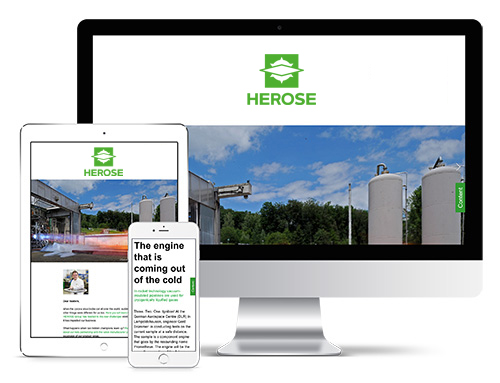Only a brief production stop at Focast thanks to an unorthodox solution from HEROSE for the cupola furnace
11th November 2018, 7:47 am: the telephone of Bernt Ohlow from the technical customer services of HEROSE in Bad Oldesloe rang. On the other end: the maintenance manager at the ironworks Focast in Lüneburg. He sounded in a bit of a rush: “A valve is defect in the control section for the oxygen supply of our furnace. The Production is standing and we need help as quickly as possible.” The employee continues: “We could not believe it, we received the spare part within two hours. That was a fantastic service.”
The early shift got him out of bed at 5 am because of the valve problem. “We always fire up the so-called cupola furnace at about 4 am in which we melt our scrap. Shortly afterwards, the lads had noticed what was going on and got me out of bed.” He had to take a look before he found the almost illegible lettering HEROSE on the 15 year old valve. “I was not familiar with HEROSE.“ But that is what Google is there for. “And then I gave them a ring off the chance.” And had Bernt Ohlow on the other end. In order to be able to identify the valve – “There were no numbers or anything else engraved,” – the ailing part was photographed with a cell phone and the photos sent to Bad Oldesloe by email. Then the size was quickly measured and the problem described … and the problem was finally found: “The cone of the sealing surface was damaged.”
Off to Lüneburg by courier
Although HEROSE did not have a complete valve of this series on stock, they knew how to help. Bernt Ohlow: “We just sent the matching top section of a similar valve to Lüneburg by courier.”
It arrived at 8:50 am, was installed (“It was only six bolts”) – and the production started again at 10:23 am. As vc paid a visit to the company Focast for this report at the beginning of February, they were still impressed there: “It is not a matter of course that we received such unconventional help. And on the side, it is also a proof of quality that the valve has been working for 15 years without complaint.”
In 2018, with 200 employees, the company Focast – previously Lüneburger Eisenwerk – produced 9,200 tonnes of cast parts for mechanical engineering pumps, motors and compressor housings as well as machine beds. They had a turnover of 24 million Euros. Managing director Carsten Weißelberg: “We supply about 150 customers that, to the greatest extent, produce in Germany.” These include heavy weights such as Gildemeister, GEA, Aerzener and Renk.
The raw material for Focast is scrap. This is melted in the so-called cupola furnace at up to 1,600 degrees Celsius. Then the liquid iron is poured into the respective moulds. There are about 1,500 so-called active parts and another 5,000 models in stock. Focast in Lüneburg has specialised in single-unit production and small series.
How a cupola furnace works
To fire-up the furnace, a wooden fire is ignited on its base, covered with coal and brought to smolder using a gas burner. Then with burning embers, the furnace is filled with several layers of metal and coke while blowing in air in the process.
This results in temperatures up to 1,600 degrees Celsius on the base of the furnace that melt the metal. The cupola furnace has a special significance for producing cast iron, as with Focast. In doing so, it is supplied with raw iron, steel scrap, recycled materials and broken machine casting. The setting of the cast iron carbon content is carried out via the ration steel scrap (low carbon content) to broken machine casting (higher carbon content). Adding more coke also increases the carbon content. Moreover, lime is also added to neutralise the acid slag generated during the process, and to improve its flowing properties. Blowing in air with an increased oxygen content also reduces the carbon content of the cast iron. By the way, the cupola furnace was discovered in 1794 by the Englishman John Wilkinson.
Photo: Carsten Wurr


 Read the current digital customer magazine now!
Read the current digital customer magazine now!
